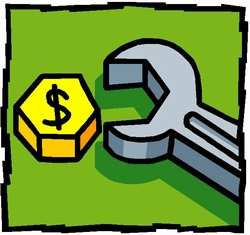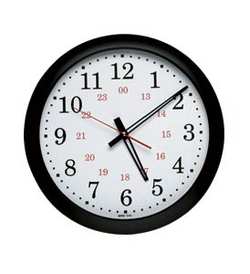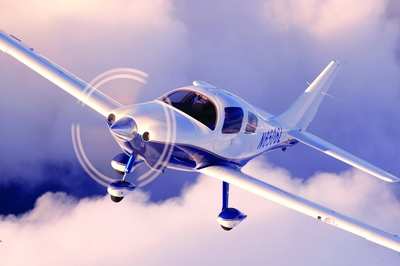Is It The Right Option For You?
By ANN Contributor Thomas P. Turner
 Fractional
ownership.
Fractional
ownership.
This aircraft ownership option has seemingly sprouted almost
from nowhere in the last few years. Although fractional ownership
of professionally flown turbine aircraft appeared a few years
earlier, the rise of owner-flown fractional ownerships began
concurrently with the introduction of what we now call Technically
Advanced Aircraft (TAA)--airplanes with moving-map GPS and
autopilot technology, more and more frequently with "glass cockpit"
Primary Flight Display (PFD)/Multifunction Display (MFD)
panels.
Does fractional ownership make sense to pilots who fly
piston-powered airplanes? What are the deciding points on buying
into a fractional? What are the unique benefits of fractionals that
offset some of the costs? When are you ahead of the game to bypass
fractionals and buy an airplane outright? What might you consider
to decide whether fractional ownership makes sense for you?
To answer these questions ANN has spent several months
researching fractional ownership of owner-flown, piston-powered
airplanes. We've surveyed readers like you who are fractional
owners, who are currently considering buying into a fractional
program, or have been fractional owners but have left the program
for one reason or another. We've also polled managers of
fractionals. With this cross-section, we got a sense of each
perspective toward fractional ownership of owner-flown piston
airplanes-you'll see quotes from several ANN readers' responses as
you read this report.
Maintenance
 A huge advantage to
fractional ownership is that the program managers take care of all
maintenance. Managers gamble that nearly-new airplanes will have
relatively few unscheduled maintenance expenses, so they build a
small reserve into program fees but the owners will not have to
worry about ponying up thousands without warning for unexpected
repairs. Further, many fractionals manage several nearly identical
airplanes. So if yours is in the shop, another just like it may be
available. In fact, an owner may have equity in a specific airframe
but day-to-day fly any from a pool of like aircraft.
A huge advantage to
fractional ownership is that the program managers take care of all
maintenance. Managers gamble that nearly-new airplanes will have
relatively few unscheduled maintenance expenses, so they build a
small reserve into program fees but the owners will not have to
worry about ponying up thousands without warning for unexpected
repairs. Further, many fractionals manage several nearly identical
airplanes. So if yours is in the shop, another just like it may be
available. In fact, an owner may have equity in a specific airframe
but day-to-day fly any from a pool of like aircraft.
"I wouldn't bother to fly any more if I had to go back to
renting dirty, 30-year-old 172s with intermittently working
avionics, etc." -- Current fractional owner
Scheduling of routine maintenance, lack of lump-sum payments for
annual inspections and other shop time, management of unforeseen
mechanical problems and substitute aircraft in the event yours is
down are some of the biggest pluses of fractional programs over
partnerships or outright aircraft ownership.
Scheduling and Fees
 Scheduling a fractional
airplane is similar to traditional renting: call the managers and
get on the schedule. Your level of ownership -- "right to use" or
percentage of equity partnership-may determine your priority, but
you are competing with fewer pilots than at the usual rental FBO,
and if you've paid enough you might be able to get in line ahead of
other fractional members. The corollary to this is that your level
of investment in the program may mean others have priority over
you, even though your investment is considerable.
Scheduling a fractional
airplane is similar to traditional renting: call the managers and
get on the schedule. Your level of ownership -- "right to use" or
percentage of equity partnership-may determine your priority, but
you are competing with fewer pilots than at the usual rental FBO,
and if you've paid enough you might be able to get in line ahead of
other fractional members. The corollary to this is that your level
of investment in the program may mean others have priority over
you, even though your investment is considerable.
"I gave up the freedom of going flying on a beautiful day. I
have to carry everything with me for each flight instead of leaving
it in the hangar or in the plane." -- Current fractional
owner
One bugaboo of traditional renting is the minimum overnight fee.
Usually and FBO will charge for a minimum number of flight hours
for every 24-hour period you have possession of the airplane, even
if you actually flew it less. As with outright ownership, in
fractionals you only pay hour fees for the actual time you log on
the airplane.
"Aircraft availability was not very good." -- Former
fractional owner
Another advantage of the larger fractional programs is the
ability to rent airplanes at other locations in your program's
network. Are you a member of a program in New York and are
vacationing in Florida? If your program has outlets there, you may
be able to schedule just as if you were at your home field. With
essentially identical aircraft and stringent, standardized training
and currency requirements, it's safe for the fractional managers,
and convenient for you, to step right into program airplanes in
remote locations.

"I like the ability to fly multiple aircraft at multiple
locations." -- Current fractional owner
Fractional owners have an expectation that, if they are not able
to schedule an airplane because of prior claims on the desired
time, that the airplane is actually being used. To prevent pilots
from scheduling "on spec" and then being a no-show, most
fractionals do assess a token fee of $3 for each flight hour
scheduled but not actually flown. It's also assessed if the
airplane was booked to fly a certain number of hours but was
actually flown less. It's a very small fee in the scheme of
fractional things, designed as a deterrent to increase scheduling
availability to all program members.
"Occasionally (but not often) an airplane is not available
when I want to use it due to another owner's use." -- Current
fractional owner
Some equity ownerships may incur local property taxes. Some
fractional programs have begun adding a fuel surcharge to the
contracted hourly fee.
Costs per flight hour are set as a condition of the program
contract-and may vary depending on the pilot's initial investment
and level of membership. Generally the rate per flight hour
increases after a pilot exceeds 100 flight hours per year, a scheme
to keep individual use down and therefore make the airplane more
frequently available to all fractional owners.
Coming Friday -- OK, So What Will It Cost
Me?
 ANN's Daily Aero-Linx (04.15.24)
ANN's Daily Aero-Linx (04.15.24) Classic Aero-TV: 'No Other Options' -- The Israeli Air Force's Danny Shapira
Classic Aero-TV: 'No Other Options' -- The Israeli Air Force's Danny Shapira Aero-News: Quote of the Day (04.15.24)
Aero-News: Quote of the Day (04.15.24) Airborne 04.16.24: RV Update, Affordable Flying Expo, Diamond Lil
Airborne 04.16.24: RV Update, Affordable Flying Expo, Diamond Lil ANN's Daily Aero-Term (04.16.24): Chart Supplement US
ANN's Daily Aero-Term (04.16.24): Chart Supplement US






